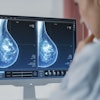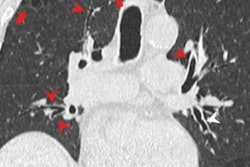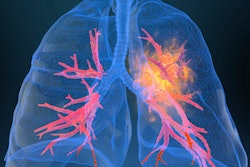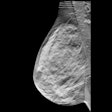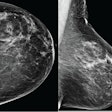
Identifying women eligible for CT lung cancer screening when they present for breast cancer screening could increase lung cancer detection rates and therefore improve patient outcomes, Stanford researchers have found.
The approach shows promise for boosting lung cancer screening uptake, but primary care physicians -- who are often the ones recommending breast cancer screening to patients -- don't seem to be taking advantage of it, wrote a team led by Dr. Ashley Titan. The group published its findings September 30 in JAMA Network Open.
"The same clinicians who follow breast cancer screening guidelines fail to follow lung cancer screening guidelines, possibly leading to decreased screening rates in eligible women," the team noted.
Low-dose CT lung cancer screening has been shown to decrease mortality rates, but it is underused among eligible women, despite the fact that in 2021 the U.S. Preventive Services Task Force (USPSTF) expanded the pool of those eligible to undergo the exam. In contrast, more than 70% of women eligible for breast cancer screening undergo it regularly, the team explained.
It doesn't help that many primary care physicians aren't familiar with the USPSTF's lung cancer screening recommendations, and thus don't actively recommend it to their breast cancer screening patients.
"Apart from the lack of education and awareness regarding lung cancer screening, screening barriers -- such as nihilism among clinicians and anxiety over a potential diagnosis -- among women remain pervasive," the group wrote.
Titan and colleagues sought to assess the number of women who underwent breast cancer screening and were also eligible for CT lung cancer screening via a study that included 874 women between the ages of 55 and 74. The women were screened for breast cancer between January 2019 and June 2020 and had a history of smoking.
The primary outcome of the study was the number of women who received mammograms and who were also eligible for CT lung cancer screening (using the USPSTF's 2013 lung cancer screening guidance); secondary outcomes were the number of women diagnosed with lung cancer and the type of clinician who ordered the screening exam. The researchers adjusted for factors such as age, race, employment status, insurance status, personal history of pulmonary conditions, family history of lung cancer, pack years, and years since quitting smoking.
The investigators found that of the 874 women who underwent breast cancer screening, 11.3% were also eligible for lung cancer screening, but only 35% of those were actually screened for lung cancer. Primary care physicians ordered breast cancer screening for 82.6% of women eligible for it but for 60% of those women eligible for lung cancer screening. The authors also found that a woman being eligible for lung cancer screening was not associated with a higher likelihood of her getting screened.
It's time for primary care providers to step up their screening recommendation game, wrote Dr. Christiane Kuhl of University Hospital Aachen in Germany in an accompanying commentary.
"Exploiting the presence of women in mammographic screening sites to identify their risk status and to inform them, but also their referring physicians, about the benefits and availability of lung cancer screening is prudent to promote its dissemination right away, here and now," she noted.



